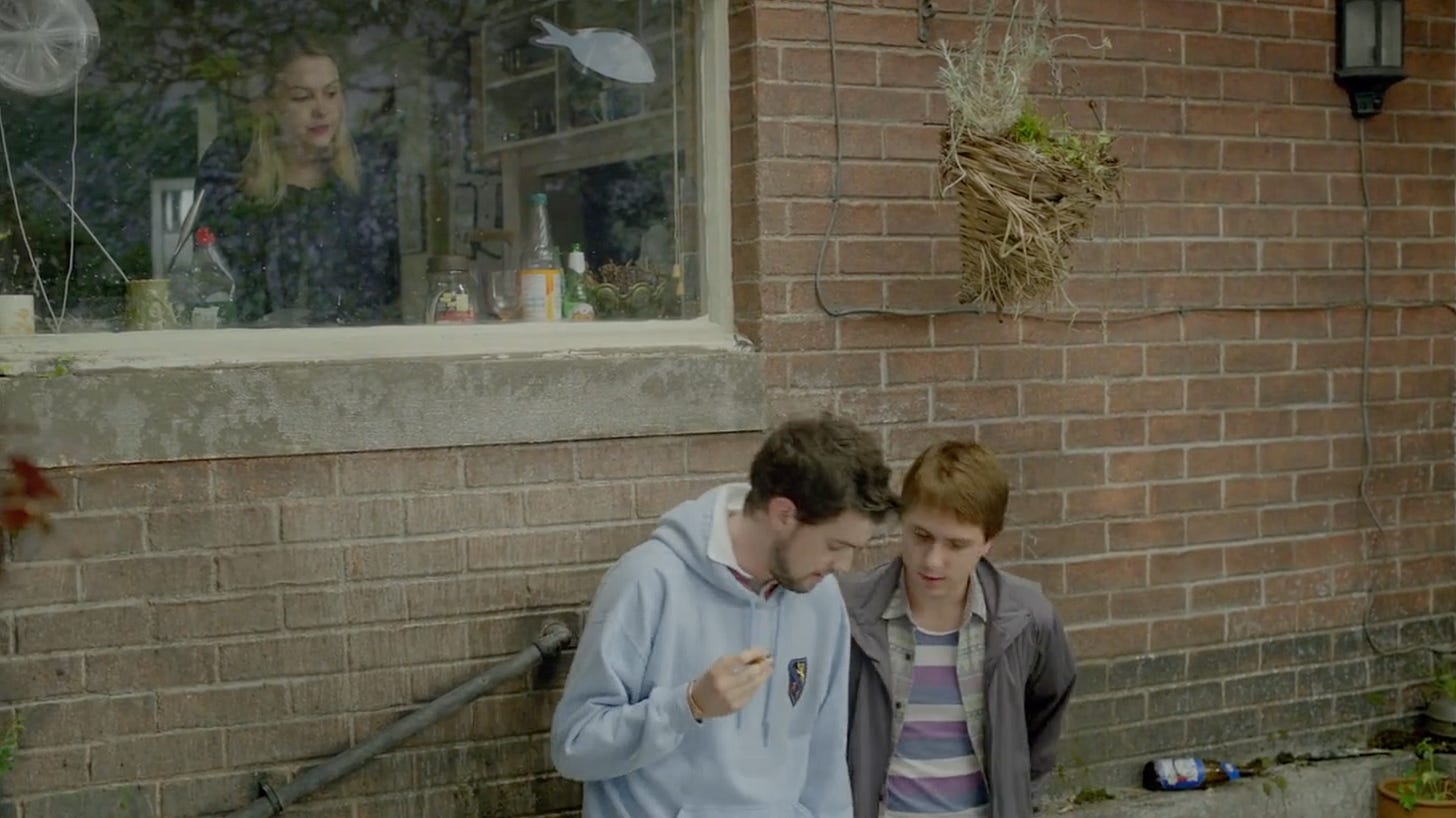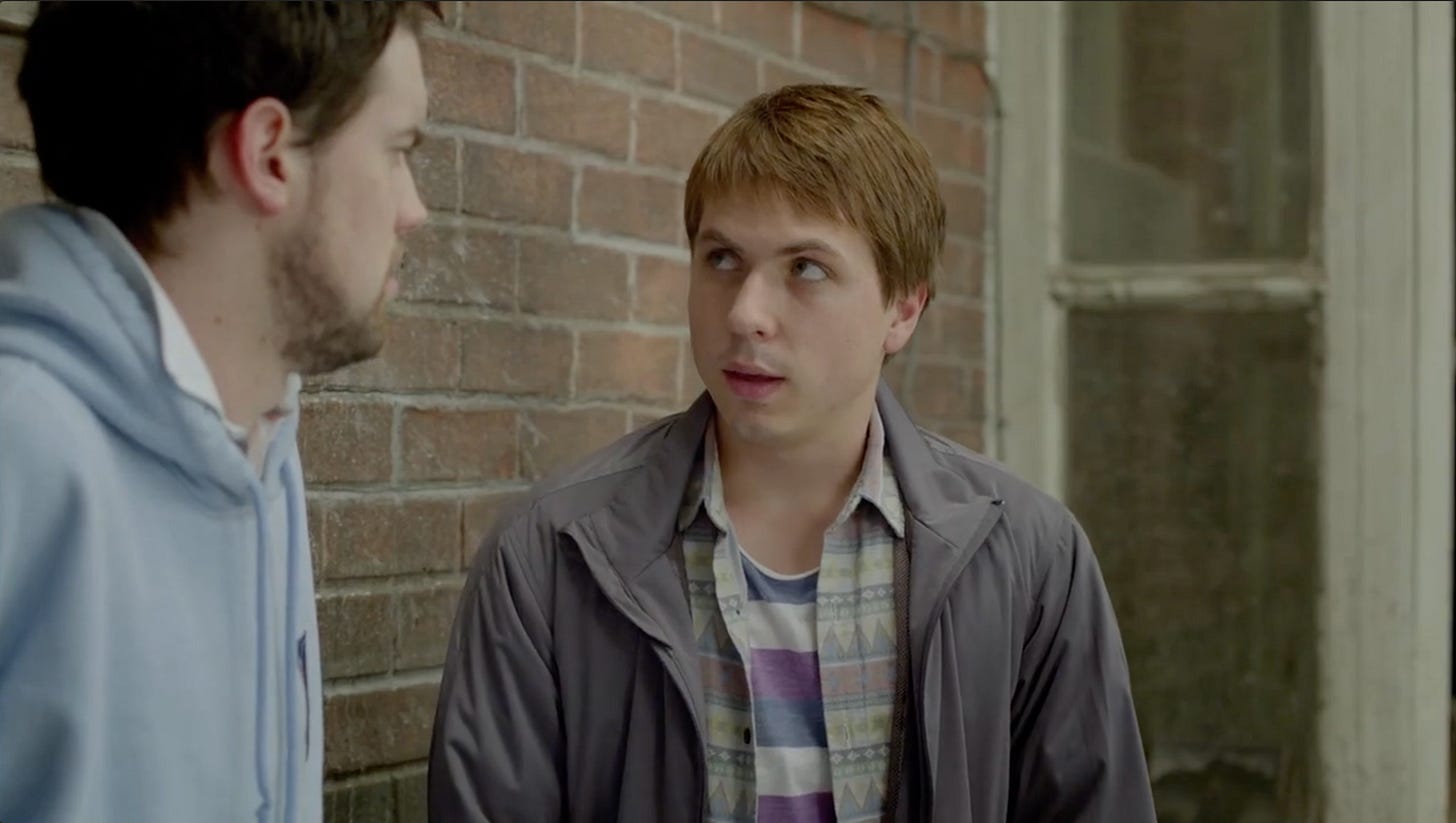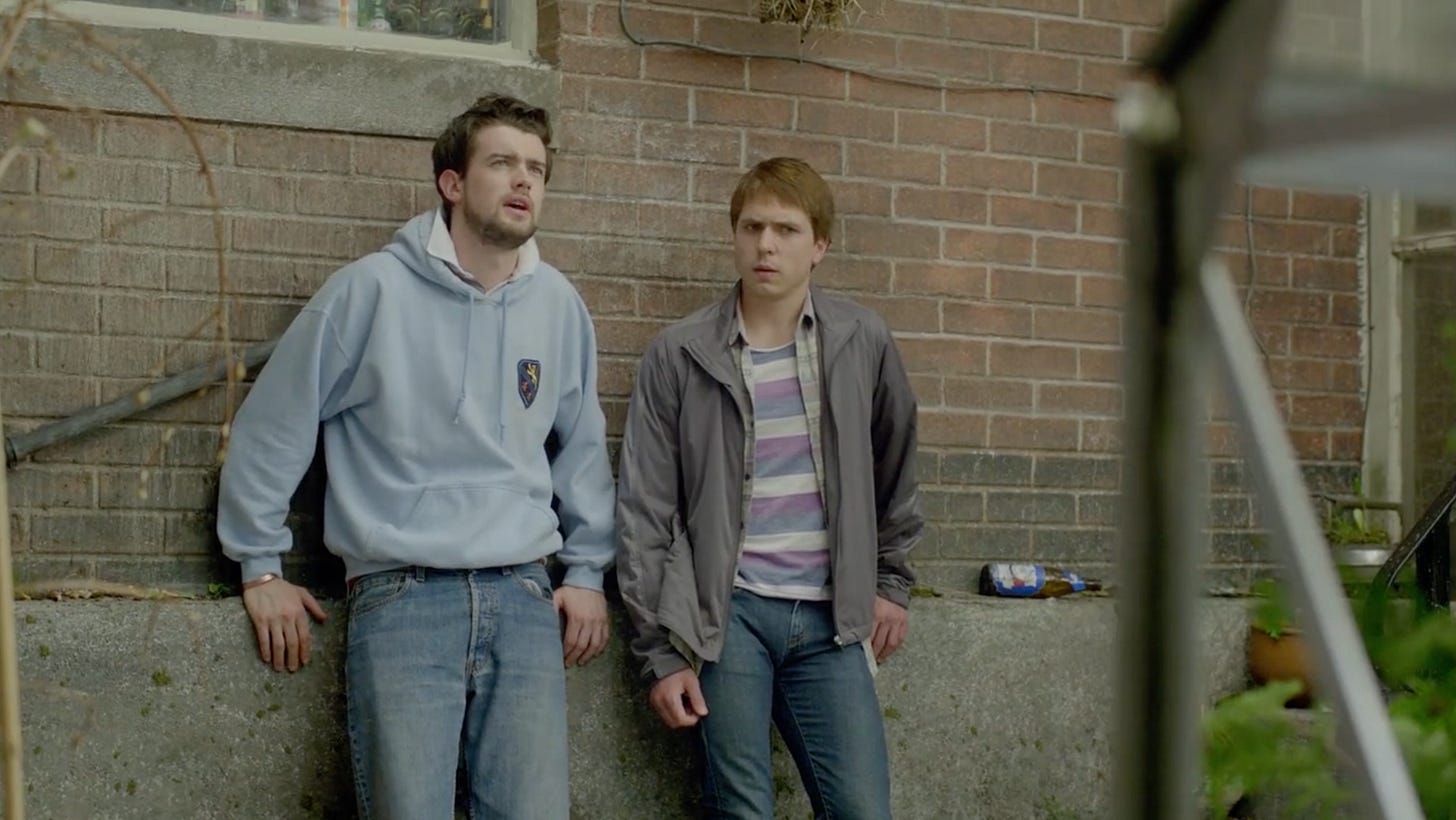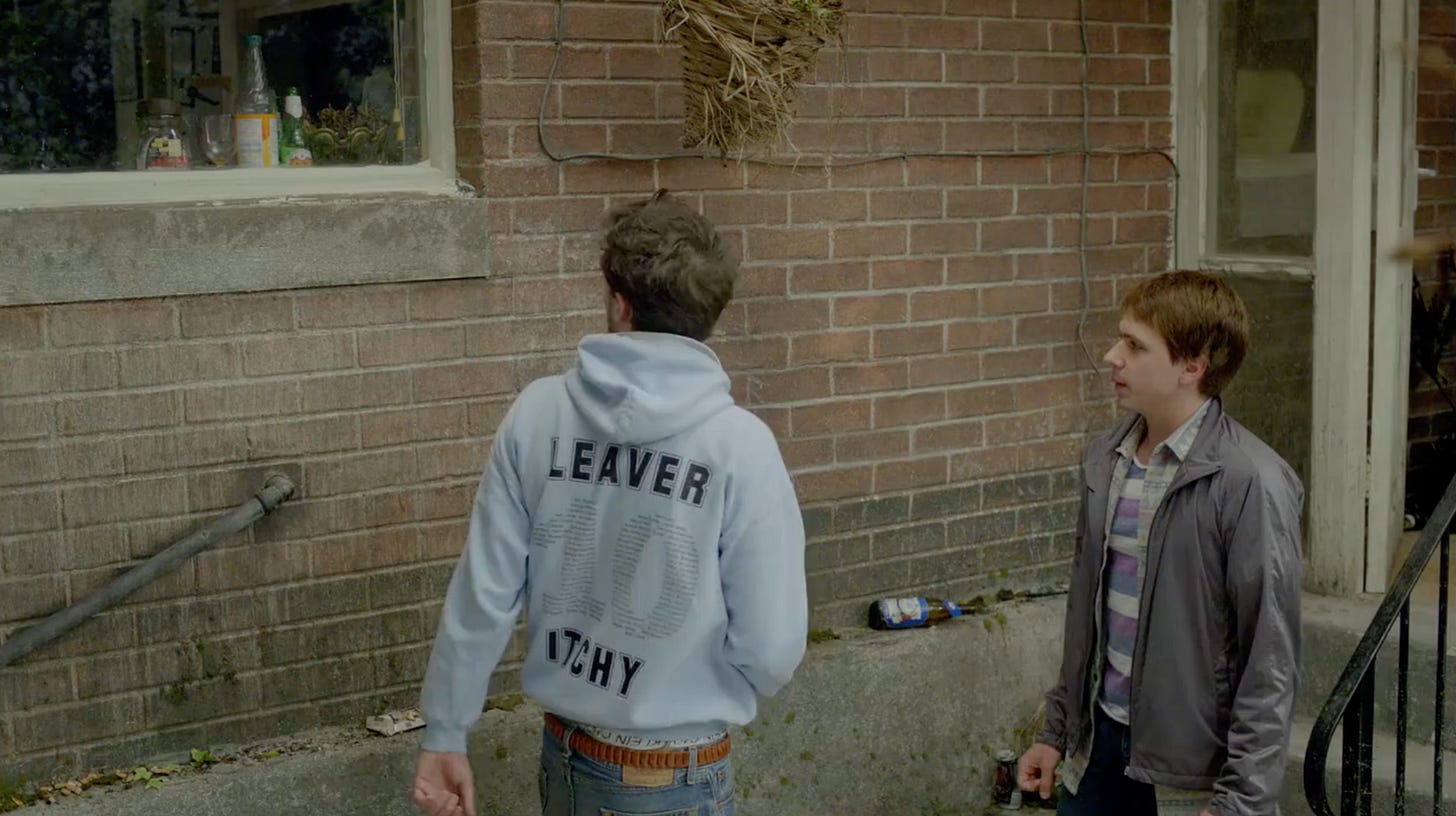Blocking and Framing an Eavesdrop: FRESH MEAT
After Josie (Kimberley Nixon) pushes Kingston (Joe Thomas) to get JP (Jack Whitehall) to move out, she goes and finds a perfect vantage point to listen in on Kingston and JP’s conversation.
How that is conversation is framed helps guide the audience through what’s happening; specifically, who’s aware of what, when.
Establish Who Is Where
Josie ushers Kingston outside, then disappears back into the house.
Before Kingston and JP get into the meat of their chat, we get a shot of them against the wall, and Josie inside, leaning close to the window. Because this happens early on, once the scene moves into closeups — whether two-shots or singles — we’re aware Josie is offscreen and eavesdropping on everything.
Conversation
closeups come into play
Most of the next shots are of Kingston and JP close together, and leading eyes important; it’s been established where the window (and thus Josie) are in relation to the boys, so when Kingston looks up (1:09), we know he’s trying to suss whether Josie can hear what’s happening.
His glance upwards leads directly to a return to the wide shot so we can see Josie is still there; using the look to motivate the cut, as well as remind us how aware Kingston is of Jodie’s presence.
We also see Josie walk away from the window, satisfied things are going how she wants.
‘dirty’ shots
These shots are certainly not required, but something in the foreground of a shot like this really adds to that ‘voyeur’ feeling; making us the audience feel like we are also ‘spying’ or eavesdropping on the boys, and thus identifying us with and reminding us of Josie.
End the Scene
At 1:57, Kingston glances up to the window again; this prompts JP to look upwards. This is the second time Kingston looked up, and the first time he did so led into another cut to the wide shot: in other words the visual language is quite clear connecting his look to Josie’s eavesdropping. So even when JP looks up he doesn’t spot Josie at the window (because we saw her leave), his train of thought “this has come from Josie, hasn’t it?” is reasonable and easy for us to follow.
We also know Josie left before the conversation took this turn, so Kingston has a calculation and a choice to make: guess how much she’s heard, and whether or not to tell her the revelations JP made about sleeping with her.
In other words what the scene has accomplished: we the audience have all the information, but we also know what information each of the characters to and do not have.
Takeaways
We don’t have to be ‘with’ someone to know they can hear a scene; seeing the eavesdropper in relation to the speakers can be enough.
Sprinkling in other details — in this case making sure you see when the eavesdropper leaves; some shots which make the audience also feel as though they’re spying, too — can really underscore the overall feel you’re going for.




